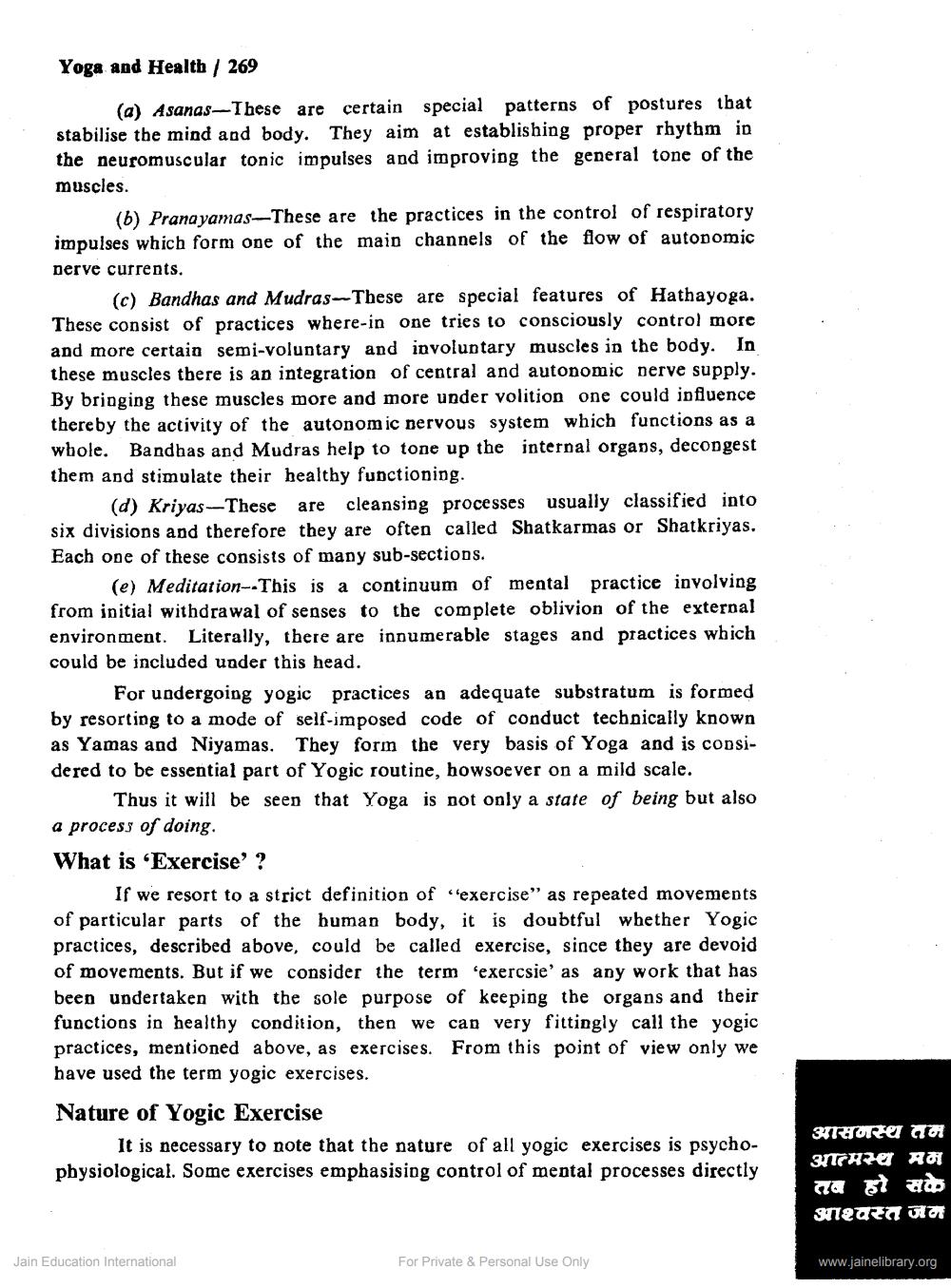Book Title: Yoga and Health Author(s): M L Gharote Publisher: Z_Umravkunvarji_Diksha_Swarna_Jayanti_Smruti_Granth_012035.pdf View full book textPage 3
________________ Yoga and Health / 269 (a) Asanas-These are certain special patterns of postures that stabilise the mind and body. They aim at establishing proper rhythm in the neuromuscular tonic impulses and improving the general tone of the muscles. (6) Pranayamas-These are the practices in the control of respiratory impulses which form one of the main channels of the flow of autonomic perve currents. (c) Bandhas and Mudras-These are special features of Hathayoga. These consist of practices where-in one tries to consciously control more and more certain semi-voluntary and involuntary muscles in the body. In these muscles there is an integration of central and autonomic nerve supply. By bringing these muscles more and more under volition one could influence thereby the activity of the autonomic nervous system which functions as a whole. Bandhas and Mudras help to tone up the internal organs, decongest them and stimulate their healthy functioning. (d) Kriyas-These are cleansing processes usually classified into six divisions and therefore they are often called Shatkarmas or Shatkriyas. Each one of these consists of many sub-sections. (e) Meditation-- This is a continuum of mental practice involving from initial withdrawal of senses to the complete oblivion of the external environment. Literally, there are innumerable stages and practices which could be included under this head. For undergoing yogic practices an adequate substratum is formed by resorting to a mode of self-imposed code of conduct technically known as Yamas and Niyamas. They form the very basis of Yoga and is considered to be essential part of Yogic routine, howsoever on a mild scale. Thus it will be seen that Yoga is not only a state of being but also a process of doing. What is 'Exercise'? If we resort to a strict definition of “exercise" as repeated movements of particular parts of the human body, it is doubtful whether Yogic practices, described above, could be called exercise, since they are devoid of movements. But if we consider the term 'exercsie' as any work that has been undertaken with the sole purpose of keeping the organs and their functions in healthy condition, then we can very fittingly call the yogic practices, mentioned above, as exercises. From this point of view only we have used the term yogic exercises. Nature of Yogic Exercise It is necessary to note that the nature of all yogic exercises is psychophysiological. Some exercises emphasising control of mental processes directly आसनस्थ तम 3ITCHZO AH तब हो सके। आश्वस्त जम Jain Education International For Private & Personal Use Only www.jainelibrary.orgPage Navigation
1 2 3 4 5 6 7 8 9 10 11
